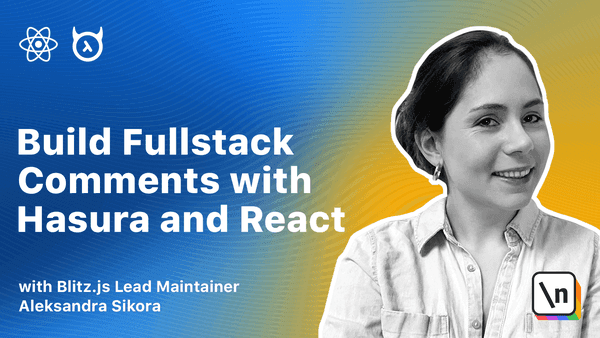This video is available to students only
Adding new comments with a GraphQL mutation
This lesson will show how to extend the hook to handle adding new comment logic. It will cover adding a new GraphQL mutation and using it from the frontend application.
This page is a preview of The newline Guide to Full Stack Comments with Hasura and React
